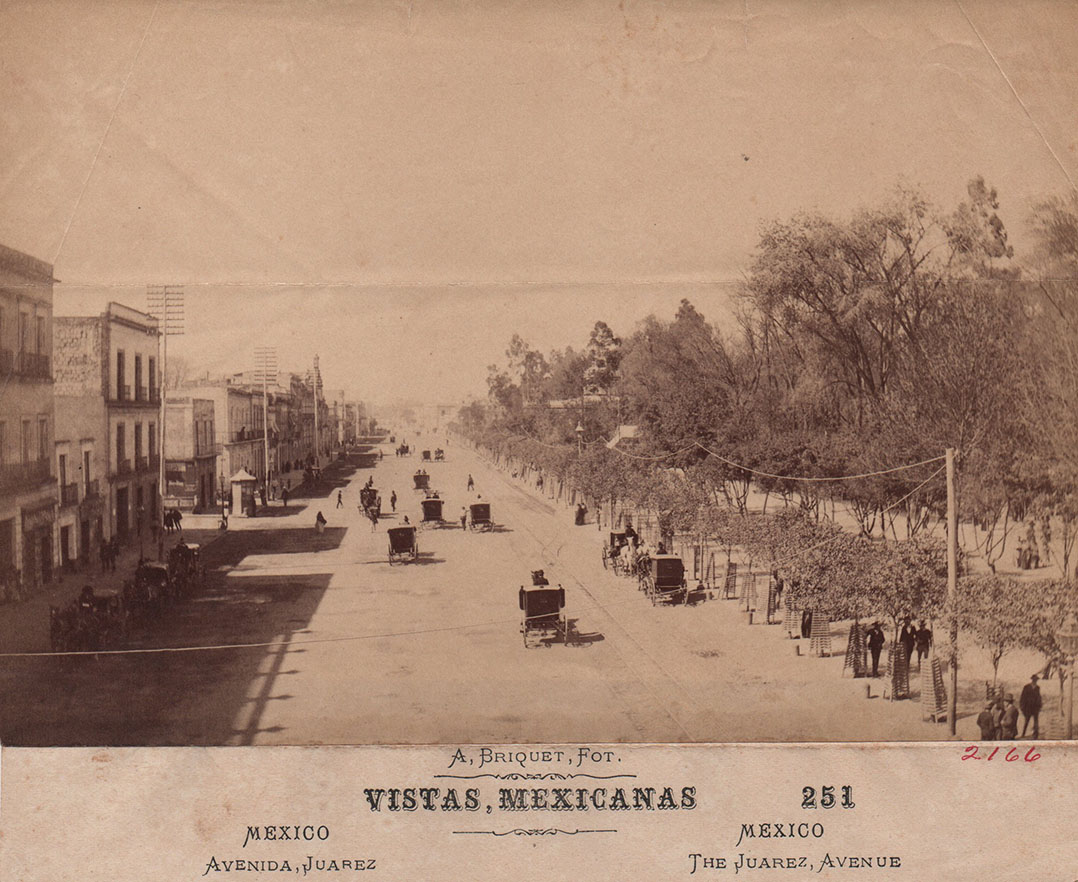Juarez Avenue. Mexico. Circa 1890.
Vintage loose albumen print - measurements: 13 x 19 cm / 5.11 x 7.48 in-, mounted on its lower margin on a vintage paper measuring only 3.8 x 19 cm, with the legend printed in ink and with artistic letters: "A. Briquet, Fot. - Vistas, Mexicanas. 251. Mexico. Avenida Juarez" and in English: "Mexico. The Juarez, Avenue" Also seen in the lower right, handwritten in red ink, the figure: "2166".
Due to its geopolitical importance, Mexico attracted the interest of different pioneers of European photography, especially those from the French school; some linked to the brief reign (1864-1867) of Maximilian of Austria, a foreign monarch imposed by Emperor Napoleon III.
Alfred Saint-Ange Briquet, better known as Abel Briquet, was born in Paris in 1833 and died in Mexico City around 1926. He began in his country in the new art of photography, he was a professor of this subject at the prestigious military academy de Saint-Cyr, he knew how to run a Parisian studio focused on portraiture and, finally, he emigrated to Mexico where he developed an intense activity especially as a documentary photographer.
His chambers were at the service of the modernization of the young Latin American nation. Around 1876 he received the important commission to register the construction of the National Railways of Mexico (FNM), especially the Veracruz-Mexico City line.
He is also the author of a series of valuable albums known under the titles of "Mexican Types", "Mexican Antiquities" and "Mexican Views"; From this last series we present one of his urban registers with the walk on "Avenida Juárez", one of the most aristocratic of the Aztec capital and an access road to the historic center. The scene was masterfully captured by Briquet's camera in a aerial shot, of the panorama type and on a sunny afternoon. It allows us to appreciate the intense traffic of horse-drawn carriages along that wide avenue, the relaxed wandering of its men and women, the progress represented by the power lines, the line of important buildings on the left and the profuse grove of the right.
By Abel Alexander
President of the Ibero-American Society for the History of Photography
| AUTHOR | ABEL BRIQUET |
|---|
Are you interested in selling some works?
Send us an email briefly indicating
which works you intend to put on sale, and we will respond. click here
Subscribe to our newsletter to be updated.
Check our Newsletters